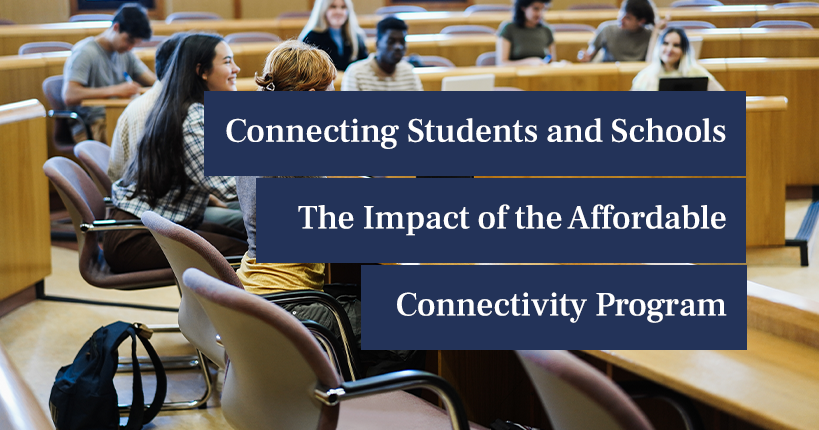The FCC’s Affordable Connectivity Program is a new initiative that aims to expand internet access to low-income households and bridge the digital divide. One of the key groups that has benefited from the program is students and schools, who have seen a significant expansion of connectivity as a result of the program.
Here’s a closer look at how the Affordable Connectivity Program has helped students and schools expand connectivity:
Expanding Internet Access for Students
One of the main goals of the Affordable Connectivity Program is to ensure that every American has access to high-quality, affordable internet service. This is especially important for students, who often rely on the internet for a range of educational purposes, such as research, communication with teachers and classmates, and online learning.
Through the Affordable Connectivity Program, low-income students have been able to access affordable broadband service, enabling them to participate fully in the digital classroom and take advantage of all the educational resources the internet has to offer.
Connecting Schools to the Internet
In addition to expanding internet access for students, the Affordable Connectivity Program has also helped schools expand connectivity by providing funding for the installation of broadband infrastructure and the purchase of internet-enabled devices.
This has been especially important in rural and hard-to-reach areas, where schools often face challenges in accessing high-quality internet service. By providing funding for broadband infrastructure and internet-enabled devices, the Affordable Connectivity Program has enabled schools in these areas to connect to the internet and provide their students with the same educational resources and opportunities as those in more urban areas.
Improving Distance Learning
The COVID-19 pandemic has highlighted the importance of internet connectivity in education, as many schools have had to rely on distance learning to continue educating their students. The Affordable Connectivity Program has played a crucial role in helping schools and students expand connectivity and transition to distance learning.
Through the program, schools have been able to purchase internet-enabled devices, such as laptops and tablets, for students to use at home. This has enabled students to continue learning remotely and participate in virtual classes and other online activities.
Conclusion
In conclusion, the Affordable Connectivity Program has had a significant impact on students and schools, helping to expand internet access and connectivity for both groups. By providing funding for broadband infrastructure, internet-enabled devices, and affordable broadband service, the program has enabled students to fully participate in the digital classroom and take advantage of all the educational resources the internet has to offer. It has also enabled schools to connect to the internet and provide their students with the same educational opportunities as those in more urban areas. The program has played a crucial role in helping schools and students transition to distance learning during the COVID-19 pandemic, and it will continue to have a positive impact on education in the years to come.


